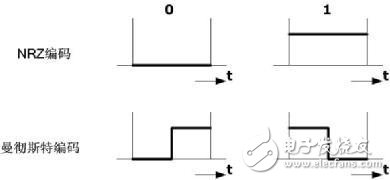Engineers who have worked with CAN communication are likely familiar with the term "bit stuffing," but what exactly is it, and why is it used? Many people may not fully understand its purpose, and this article aims to clarify that confusion once and for all.
In digital data transmission, various coding schemes are used to represent bits. One of the most common is Non-Return-to-Zero (NRZ), where the signal level remains constant during the bit period. Another is Manchester encoding, which uses a transition in the middle of each bit time to ensure clock synchronization. While Manchester encoding provides self-clocking capabilities, it requires twice as many time slots per bit, effectively halving the bit rate compared to NRZ at the same bit time.
The main issue with NRZ is that long sequences of identical bits can cause problems with synchronization. If the signal stays at the same level for too long, it becomes difficult for receivers to maintain timing accuracy. To avoid this, the CAN protocol uses a technique called bit stuffing. This involves inserting an inverted bit after every five consecutive identical bits, ensuring that there is always a transition to maintain synchronization.

Figure 1: NRZ and Manchester coded bit representation
The CAN protocol employs NRZ encoding combined with bit stuffing, typically using a 5-bit stuffing window. This approach ensures reliable communication while maintaining high data rates. It also helps reduce electromagnetic interference by limiting the number of signal transitions, which improves the overall signal integrity on the bus.
Bit stuffing is applied to specific parts of the CAN frame, such as the Start of Frame (SOF), arbitration field, control field, data field, and data frames. When five identical bits are detected, an opposite bit is inserted into the stream. However, certain fields like the CRC delimiter, ACK field, and EOF are transmitted without bit stuffing because they have a fixed pattern.
This mechanism plays a crucial role in keeping the network synchronized, especially when dealing with different node oscillators that may have slight frequency differences. By ensuring regular transitions, bit stuffing helps prevent data loss and maintains the robustness of CAN communication in real-world applications.
Electric Power Components,Multi-Function Power Instrument,Cckem6 Three-Phase Multi-Function,Three Phase Power Monitoring
ZHONG HAN INTERNATIONAL TRADE CO., LTD , https://www.cck-ht.com